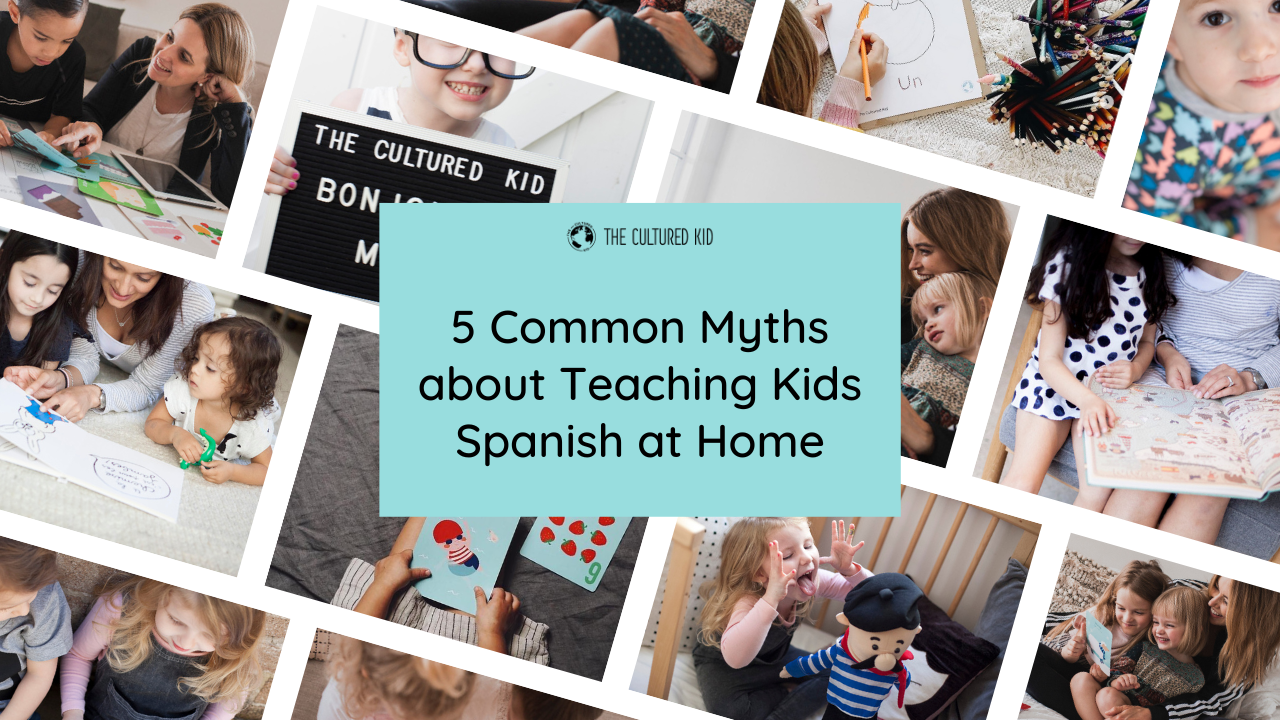5 Myths about Teaching Kids Spanish at Home

Are you considering teaching your child Spanish at home? If so, you may have heard some myths that could be holding you back. Let's debunk some of these myths and help you get started on your language-learning journey with your child.
Here are 5 myths about teaching kids Spanish at home that you should know about:
Myth #1: Bilingual Kids Must Be Brainiacs
While it is true that bilingual children tend to have better problem-solving skills and a greater ability to focus and switch between tasks, this does not mean that your child has to be a genius to learn a second language. All they need is the desire to learn and a little bit of hard work. So don't be intimidated by the idea of teaching your child Spanish. You can start with simple phrases and build from there.
Myth #2: Learning Two Languages Confuses Kids
Some people believe that kids who learn two languages at once will get confused and won't be able to tell the difference between the two. However, kids are incredibly adaptable and can easily switch between languages. In fact, studies have shown that bilingual children have better cognitive flexibility, which allows them to quickly adapt to new situations and problem-solve in creative ways. So, don't worry about confusing your child by teaching them Spanish at the same time as their native language.
Myth #3: Language Learning is for Later in Life
It's never too early to start teaching your child Spanish. Kids have an amazing ability to pick up new languages quickly and easily, especially when they're young. In fact, research has shown that children who are exposed to a second language before the age of six have a much higher chance of becoming fluent in that language. So why not start teaching your child Spanish now? You can start with basic vocabulary and work your way up to more complex grammar structures and conversation.
Myth #4: There’s No Point if Parents aren’t Fluent
You don't have to be fluent in Spanish to teach it to your child. There are plenty of resources available, like books, videos, and language learning apps, that can help you and your child learn together. You can also take advantage of online language tutors or language exchange programs to practice speaking with native speakers. The key is to make learning Spanish a fun and engaging experience for your child.
Myth #5: Learning Multiple Languages Slows Down Speech
Some people believe that learning multiple languages will slow down a child's speech development. However, studies have shown that bilingual children have better verbal skills and a greater ability to express themselves. Learning Spanish can actually enhance your child's communication skills and boost their confidence. So don't let the fear of speech delay hold you back from teaching your child Spanish.
In conclusion, teaching your child Spanish at home can be a fun and rewarding experience for both you and your child. Don't let these myths hold you back from starting your language-learning journey. With a little bit of effort and patience, your child can become bilingual and open up new opportunities for their future. So go ahead and start teaching your child Spanish today!
GRAB OUR FREE 'KIDS LANGUAGES MADE EASY' GUIDE
FOR NON-NATIVE PARENTS!
Discover how you can run consistent language lessons, that are fun and engaging and help your kids make the progress they deserve!
Even if you're not fluent!
We hate SPAM. We will never sell your information, for any reason.








